Mystery solved - the questions behind some of Malta’s 400-year-old paintings have been answered
We meet the man responsible for bringing their stories back to life.
A painting found in an attic in Mqabba 10 years ago has uncovered some interesting details about Malta’s past. The artwork was discovered by Rev Canon Dr Jonathan Farrugia in a storage-room of the Church and led him on a decade-long quest to find out more.
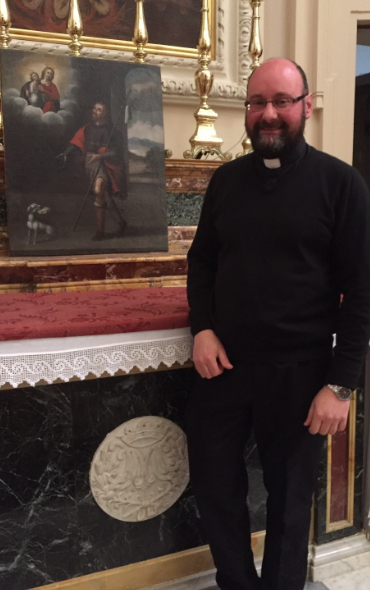
Rev Dr Jonathan Farrugia with the painting of St Roque
“The painting needed a lot of restoration as it had become detached from its frame and was torn in some places. It used to lie on the altar, and we believe it was placed there when the Church was built around 1699. When the building was damaged in World War Two the altar was torn down and rebuilt in a new less elaborate style, which left no space for this painting. It may have been placed in the attic for safety and then forgotten about. The only clue we had to suggest that a painting might have existed was an old, black and white image of the altar dating back to the beginning of the 20th century showing a niche above the larger painting of the Coronation of Mary. When we compared the size of the painting and the space on the altar, we believed that’s where it would have sat up until World War Two. The conservation carried out by Atelier del Restauro last year revealed that this painting has never been re-touched and is still in its original state."
Popular during the plague
The person in the painting is St Roque, who was a popular religious figure in Malta during the 17th century. “The disastrous plague of 1676 left many people in this village dead, including the parish priest who was building this Church. St Roque is the patron saint of the plague. The legend says he was sick with the infection himself but went on a pilgrimage to Spain and was healed. After that he spent his life helping people in Malta and devotion to him grew. There are two paintings of him in this Church alone and another in a chapel close by. He’s usually depicted with a wound on his thigh, a bandage and a dog, who is said to have fetched him food when he was sick and no-one else would come near him.”
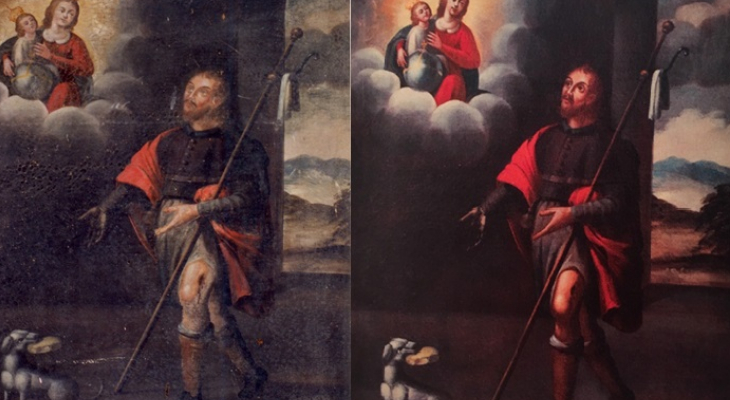
The painting of St Roque before and after its restoration
Uncovering another mystery
The Church in Mqabba also has another story to tell. This one centres around a painting called the Crowning of the Virgin from the Holy Trinity, which is found on the altar where the St Roque painting used to sit. It underwent extensive restoration last year when the Church was being renovated.
Those familiar with this painting – which stands more than 10 feet tall – knew it had gone through some botched ‘artistic’ changes. But it wasn’t until it was taken down for a closer look that the damage could really be witnessed.
“The cleaning work was carried out by conservationist Sabine Azzopardi," continues Dr Farrugia. "We had no idea that the original painting was smaller than it is today and that it had had another piece of canvas added to its back to make it fit the newer and larger frame when this present church was built. The oldest mention we have of this painting comes from 1658. Eventually, when the present church was built, it was enlarged by adding a piece of canvas glued to a wooden beam at the bottom, which we believe was added around 1699. We could also tell that a second artist had come along around 40 years later and added to the blank canvas with his own painting. Unfortunately, he wasn’t very good. For example, the saints standing either side of Mary have had their legs extended to reach the bottom of the frame. When we cleared away the centuries of soot and grime, we found the original feet which were painted by the first artist, who was much more skilled. The original part was daintier and more detailed.”
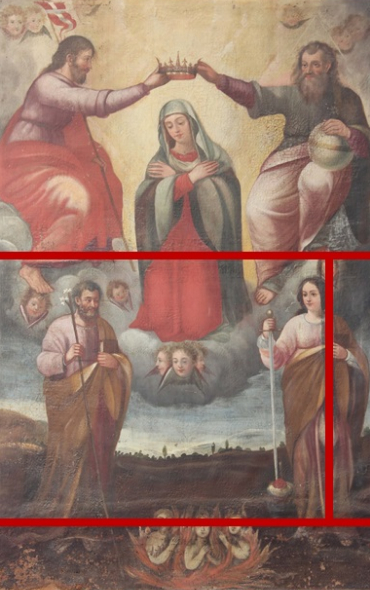
Red lines show where the extra canvas was added
Cleaning away the dirt also allowed restorers to confirm that the woman standing to the right of St Mary is St Catherine of Alexandria, who is the protector of invasions.
“Before the restoration all that was visible under her feet was this piece of cloth, which looked like a traditional Turkish headpiece; the restoration revealed it is resting on the decapitated head of a Turk,” Dr Farrugia explains. “We also realised she was standing on a broken wheel, which confirmed it was her, since the legend goes that the wheel that was supposed to kill St Catherine broke to pieces as soon as she was placed on it."
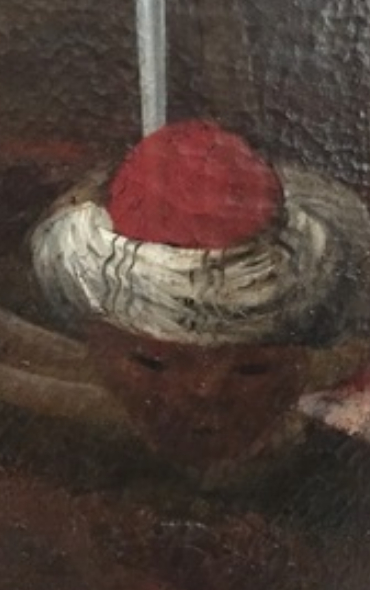
Head of a decapitated Turkish man
Covering his tracks
The Crowning of the Virgin from the Holy Trinity also revealed that the second artist tried to mask the work of his more talented predecessor. “When he couldn’t equal the beauty of the landscape in the background, he decided to just paint over it. The restorer believes the original artist was from Italy and the landscape in this painting reminded her of Tuscany. The second painter was more than likely Maltese and not as refined. He used blurry paint strokes to cover the trees in the background, which can now be seen in their original glory. The paining might have even been brought to Malta by an Italian family and then topped up forty years later by a Maltese artist. The brown and ugly landscape that was painted over made us always believe that it was a symbol of how the Maltese landscape looked during the plague as no one took care of the land during this time, but when we cleaned it back, we realised that it was a prettier landscape, giving us another clue to its origin.”
Piecing together the puzzles behind the paintings in his parish has also given him a new passion for art. “This was a rabbit hole I ended up going down. I like art, but I am not an expert. Now I’ve started to research the altars and objects I have found in this Church and other Churches like Senglea. Two years ago we found a box hidden under a closet which contained 300-year-old documents about one of Malta’s most revered statutes of Christ in Senglea. After sifting through around 2,000 pages of documents, I wrote a book detailing its history.”
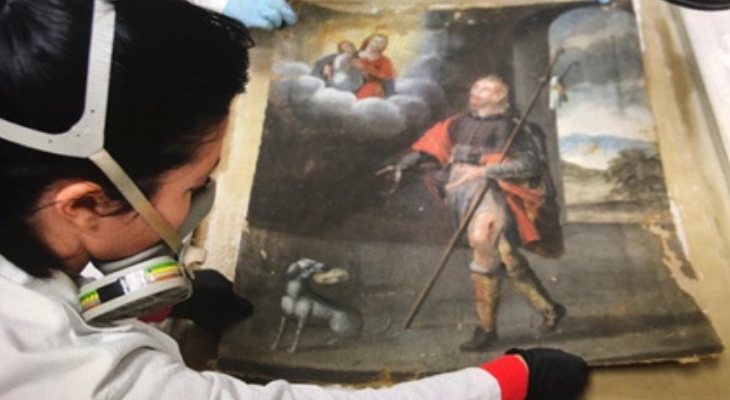
Restorers working on the painting of St Roque
While the painting of St Roque still must find a permanent home, it will be on display alongside other paintings at a special concert and Mass on May 5th in Mqabba Church at 7.30pm.
“We’re also hoping to open a small permanent exhibition within a room in the Church to attract people to come and see them,” added Dr Farrugia.
We wish you luck!